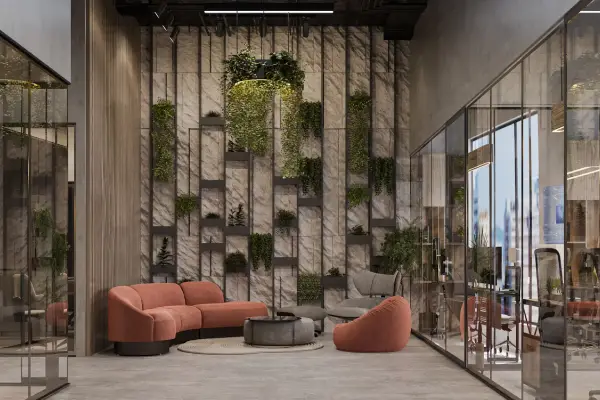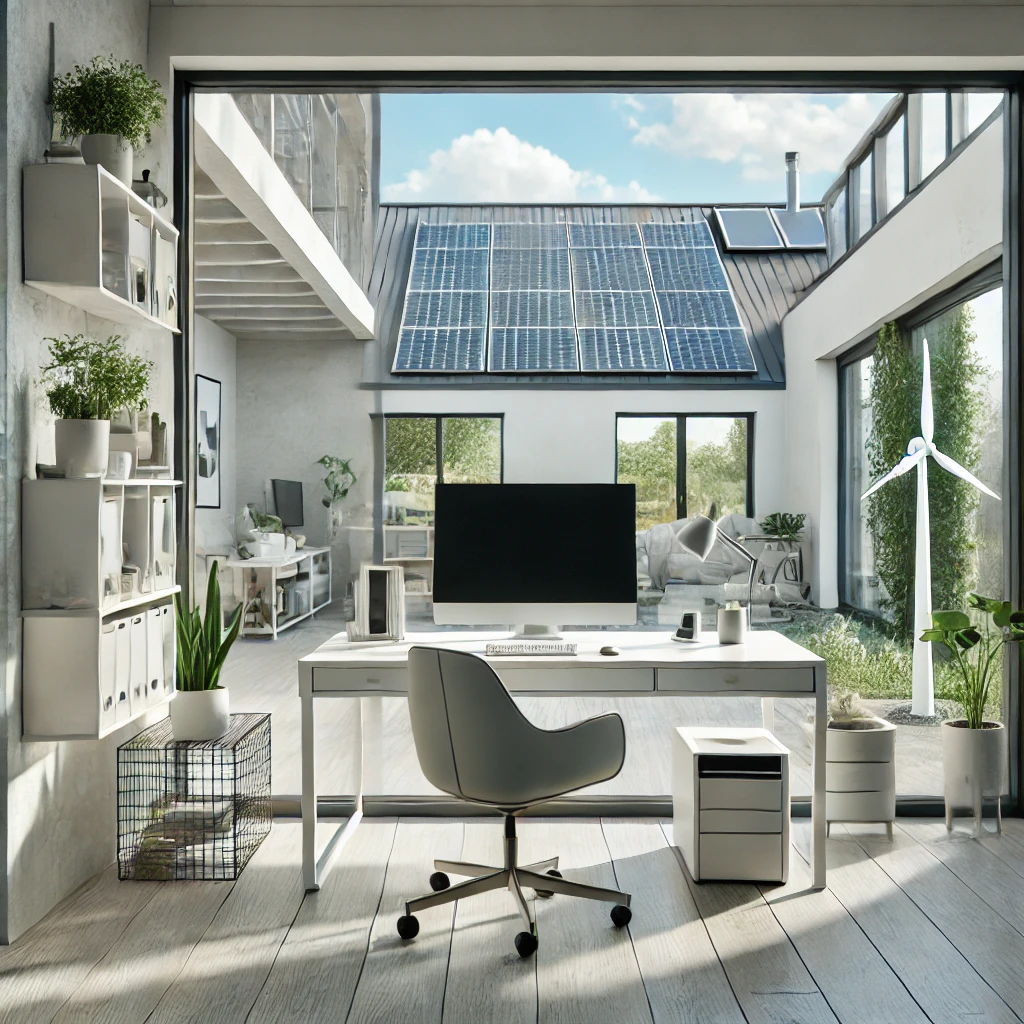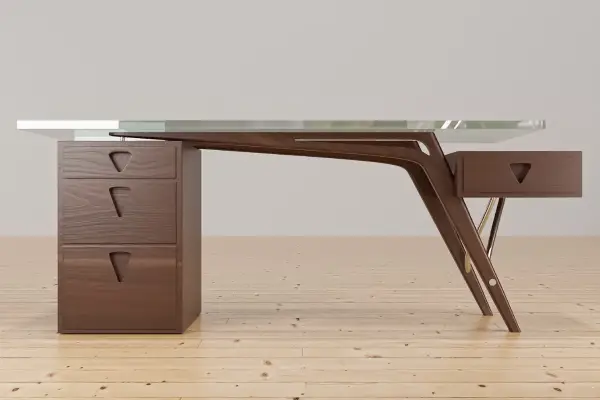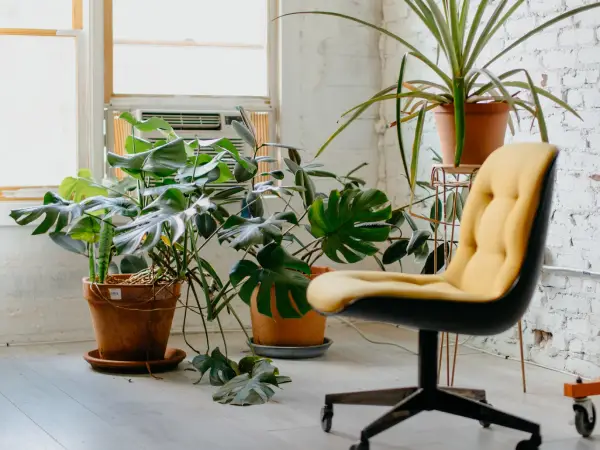Creating a minimalist office isn’t just about achieving a clean, uncluttered look. It’s about designing a workspace that seamlessly integrates functionality and aesthetics to boost productivity, foster creativity, and promote well-being. In a world where we often juggle numerous tasks and responsibilities, a well-designed minimalist office can provide the calm and efficiency we need to thrive.
Balancing functionality and aesthetics in a minimalist office can be challenging. On one hand, you want your workspace to be practical, with everything you need within reach. On the other hand, you desire a visually pleasing environment that inspires and motivates you. The good news is that with thoughtful planning and intentional choices, you can create a minimalist office that excels in both form and function.
In this article, we’ll explore strategies to help you strike the perfect balance. From choosing essential furniture and optimizing storage solutions to incorporating technology seamlessly and enhancing aesthetics with minimal decor, we’ll provide practical tips and ideas to transform your office into a space that supports both your work and your style. Whether you’re setting up a new office or revamping your current workspace, these insights will guide you in creating a minimalist office that’s both functional and beautiful.
Let’s dive into the world of minimalist office design and discover how to create a workspace where simplicity meets sophistication, and where every element serves a purpose without sacrificing style.
Understanding Minimalist Office Design
Minimalist office design is more than just a trend—it’s a lifestyle choice that emphasizes simplicity, functionality, and intentionality. At its core, minimalist design is about stripping away the unnecessary and focusing on what truly matters. In the context of an office, this means creating a workspace that supports your work habits and enhances productivity while maintaining a clean and uncluttered aesthetic.
Definition and Core Principles of Minimalist Design
Minimalist design is characterized by its simplicity, clean lines, and a monochromatic color palette. The focus is on the essential elements, eliminating anything that doesn’t serve a purpose. This approach leads to a space that feels open, serene, and free of distractions. The principles of minimalist design include:
Simplicity: Keeping things straightforward and uncomplicated.
Functionality: Ensuring that every element serves a practical purpose.
Clarity: Maintaining a clear and organized layout.
Quality over Quantity: Choosing a few high-quality items over many mediocre ones.
Benefits of a Minimalist Office
Embracing minimalist principles in your office can have numerous benefits. A clutter-free environment can enhance focus and reduce stress, making it easier to concentrate on your work. The clean, open space promotes a sense of calm and order, which can be especially beneficial in high-pressure work environments. Additionally, a minimalist office is easier to maintain, with fewer items to organize and clean.
The Challenge: Balancing Function and Form
The real challenge in creating a minimalist office lies in balancing functionality and aesthetics. It’s easy to fall into the trap of focusing solely on the look of the space, but a truly effective minimalist office must also be highly functional. This means carefully considering your needs and choosing furniture, storage solutions, and decor that not only look good but also serve a practical purpose.
As we delve deeper into this guide, we’ll explore how to prioritize essential furniture, optimize storage solutions, and incorporate technology seamlessly. Each section will provide you with practical tips and ideas to help you achieve the perfect balance between function and form in your minimalist office. By understanding and applying the core principles of minimalist design, you’ll be well on your way to creating a workspace that is both beautiful and highly functional.
Prioritizing Essential Furniture
When designing a minimalist office, the furniture you choose plays a crucial role in balancing functionality and aesthetics. Essential furniture pieces not only need to serve your daily needs but also contribute to the overall clean and uncluttered look of your space. Here’s how to prioritize and select the right furniture for your minimalist office.
Choosing Multifunctional Furniture Pieces
In a minimalist office, less is more. Opt for multifunctional furniture that can serve multiple purposes, helping you reduce the number of items in your workspace. For example, a desk with built-in storage allows you to keep essentials close at hand without adding extra cabinets or shelves. Similarly, an ottoman that doubles as storage or a convertible standing desk can provide added functionality while maintaining a sleek appearance.
Importance of Ergonomics in Office Furniture
Ergonomics should be a top priority when selecting office furniture. A well-designed ergonomic chair and desk can significantly enhance your comfort and productivity, reducing the risk of strain and injury. Look for adjustable chairs that support your posture and desks that can be tailored to your height and working style. Investing in high-quality, ergonomic furniture ensures that your minimalist office is not only visually appealing but also supports your well-being.
Examples of Essential Minimalist Furniture
Desk: The centerpiece of your office should be a minimalist desk with clean lines and ample workspace. Choose a desk with integrated cable management to keep cords out of sight and maintain a tidy look. Materials like wood or metal with a matte finish can add a touch of sophistication without overwhelming the space.
Chair: An ergonomic chair with a minimalist design is essential. Opt for a chair in a neutral color that complements your overall office theme. Features like lumbar support, adjustable height, and swivel functionality are key to ensuring comfort during long working hours.
Storage Solutions: Keep storage simple and functional. Floating shelves, wall-mounted cabinets, and minimalist bookcases can provide storage without taking up too much floor space. Consider storage solutions with clean lines and concealed compartments to keep the visual clutter to a minimum.
Lighting: Task lighting is critical in a minimalist office. A sleek, adjustable desk lamp can provide focused lighting for work while contributing to the overall minimalist aesthetic. Look for lighting options with a simple design and a neutral finish to blend seamlessly with your decor.
By prioritizing essential furniture that balances functionality and aesthetics, you can create a minimalist office that is both practical and beautiful. Choose multifunctional pieces, invest in ergonomic designs, and keep your selections simple and intentional. In the next section, we’ll explore optimizing storage solutions to maintain a clutter-free workspace while enhancing the minimalist appeal of your office.
Optimizing Storage Solutions
One of the cornerstones of minimalist office design is maintaining a clutter-free environment. Effective storage solutions are essential to achieving this goal, allowing you to keep your workspace organized and your mind focused. Here are some strategies for optimizing storage in your minimalist office.
Importance of Clutter-Free Spaces in Minimalism
Clutter is the enemy of a minimalist office. It creates visual noise and can lead to a feeling of overwhelm. By prioritizing clutter-free spaces, you can foster a sense of calm and order, which is crucial for maintaining productivity and focus. Streamlined storage solutions help you manage your belongings without compromising the minimalist aesthetic.
Types of Storage Solutions
Hidden Storage: Hidden storage solutions, such as drawers built into desks or cabinets with smooth, unadorned doors, are ideal for a minimalist office. These options keep items out of sight, maintaining a clean and sleek appearance. Consider desks with integrated storage compartments or filing cabinets that blend seamlessly with your decor.
Open Shelving: Open shelving can be both functional and decorative. Use it to display essential items that are also aesthetically pleasing, such as neatly arranged books, minimalistic office supplies, or a few select decor pieces. Be mindful not to overcrowd the shelves—leave plenty of negative space to maintain a light and airy feel.
Modular Units: Modular storage units offer flexibility and can be customized to fit your specific needs. Stackable and rearrangeable, these units can adapt to changing requirements over time. Choose designs that are simple and cohesive with the rest of your office furniture to maintain a unified look.
Tips for Maintaining an Organized and Tidy Workspace
Regular Decluttering: Make it a habit to regularly declutter your workspace. Set aside time each week to sort through papers, supplies, and other items, discarding or donating anything you no longer need. This practice helps prevent the accumulation of unnecessary items and keeps your office looking pristine.
Labeling: Use labels to identify the contents of drawers, bins, and storage boxes. This not only makes it easier to find what you need but also encourages you to keep items in their designated places. Opt for minimalist labels that are subtle and don’t disrupt the clean look of your office.
Cable Management: Cables and cords can quickly turn a tidy office into a tangled mess. Invest in cable management solutions such as clips, ties, and under-desk trays to keep cords organized and out of sight. Wireless devices can also help reduce the number of visible cables.
Digital Organization: Minimize physical paperwork by going digital. Use cloud storage and digital filing systems to store documents and reduce the need for physical files. A well-organized digital workspace complements the minimalist aesthetic and enhances overall efficiency.
Optimizing storage solutions is key to maintaining a clutter-free and visually appealing minimalist office. By incorporating hidden storage, open shelving, and modular units, you can keep your workspace organized while adhering to minimalist principles. Regular decluttering, labeling, cable management, and digital organization are essential practices to ensure your office remains tidy and efficient. In the next section, we’ll discuss how to seamlessly incorporate technology into your minimalist office without compromising its aesthetic appeal.
Incorporating Technology Seamlessly
In today’s digital age, technology is an integral part of any office. However, in a minimalist workspace, the challenge is to incorporate tech in a way that doesn’t disrupt the clean, uncluttered aesthetic. Here are some tips to seamlessly integrate technology into your minimalist office.
Choosing Sleek, Minimalist Tech Devices
The first step in blending technology with minimalist design is selecting devices that match the aesthetic. Opt for sleek, modern gadgets with clean lines and minimal branding. Many tech companies offer products specifically designed to fit into minimalist environments.
Laptops and Monitors: Choose slim laptops and monitors with thin bezels and neutral colors. Matte finishes and simple stands help keep the look understated and elegant.
Keyboards and Mice: Wireless keyboards and mice reduce cable clutter. Look for designs that are low-profile and come in shades that match your office decor.
Printers and Scanners: Compact, all-in-one devices can save space and keep your office looking tidy. Select models that can be easily tucked away when not in use.
Effective Cable Management Strategies
Cables and cords can quickly undermine a minimalist office. Implementing effective cable management solutions is essential to maintaining a clean look.
Cable Clips and Ties: Use clips and ties to bundle and route cables neatly. Attach them to the underside of your desk or along the edges to keep them out of sight.
Cable Management Boxes: These boxes can house power strips and excess cable lengths, keeping them hidden and organized.
Wireless Solutions: Whenever possible, opt for wireless devices. Bluetooth keyboards, mice, and printers can significantly reduce the number of visible cables.
Integrating Technology Without Compromising Aesthetics
The key to integrating technology in a minimalist office is to ensure that every piece of tech has its place and blends seamlessly with the overall design.
Built-In Solutions: If you’re designing your office from scratch, consider built-in solutions like under-desk cable trays, recessed outlets, and wall-mounted screens. These can help keep your workspace looking sleek and organized.
Mounting and Docking Stations: Use monitor arms to free up desk space and position your screens at the perfect height. Docking stations can keep your laptop and peripherals organized, reducing clutter.
Discreet Storage: Keep devices like external hard drives, routers, and other peripherals in discreet storage solutions. Drawer organizers and cable management sleeves can help keep these items accessible but out of sight.
Maintaining a Balance
While technology is essential, it’s important to strike a balance between functionality and aesthetics. Regularly assess your tech setup to ensure it remains efficient and visually appealing.
Update Regularly: Technology evolves quickly. Periodically update your devices to newer, more streamlined models that better fit your minimalist aesthetic.
Mindful Purchasing: Be intentional with your tech purchases. Only invest in devices that truly enhance your productivity and fit within your minimalist design.
Incorporating technology into a minimalist office requires thoughtful planning and intentional choices. By selecting sleek devices, implementing effective cable management, and integrating tech seamlessly, you can maintain a clean and uncluttered workspace. In the next section, we’ll explore how to enhance aesthetics with minimal decor, ensuring that every element of your office contributes to both its functionality and visual appeal.
Enhancing Aesthetics with Minimal Decor
While the primary focus of a minimalist office is functionality, incorporating thoughtful decor can elevate your workspace, making it both stylish and inviting. The key is to select decor items that add beauty without adding clutter. Here are some strategies for enhancing aesthetics with minimal decor.
Selecting Decor Items that Serve a Purpose
In a minimalist office, every item should have a purpose. When choosing decor, look for pieces that are both functional and beautiful.
Clocks: A wall clock can be a practical and stylish addition to your office. Choose a design that complements your overall aesthetic, such as a sleek, modern clock with clean lines.
Planters: Plants not only add a touch of nature but also improve air quality and boost mood. Opt for minimalist planters that fit seamlessly into your decor. Succulents and small potted plants are great choices for their low maintenance and compact size.
Lighting: Use lighting as a decor element. A minimalist desk lamp with a sleek design can provide both function and style. Consider floor lamps or pendant lights with simple, elegant lines to add a sophisticated touch.
Incorporating Natural Elements
Bringing elements of nature into your office can enhance the minimalist aesthetic and create a calming atmosphere.
Plants: As mentioned, plants are a great way to introduce natural elements. Choose plants that require minimal care and have a clean, modern look. Examples include snake plants, ZZ plants, and air plants.
Natural Materials: Incorporate materials like wood, stone, and metal. A wooden desk organizer, a stone paperweight, or metal bookends can add texture and interest without overwhelming the space.
Views: If possible, position your desk near a window to take advantage of natural light and views of the outdoors. This connection to nature can enhance your mood and productivity.
Using Art and Personal Items to Add Character
While minimalism emphasizes simplicity, it doesn’t mean your office should lack personality. Carefully chosen art and personal items can add character and make the space uniquely yours.
Art: Select a few pieces of art that resonate with you and fit the minimalist theme. Abstract prints, black-and-white photography, or simple line drawings can add visual interest without cluttering the space. Use frames that are simple and cohesive with your office decor.
Personal Items: Incorporate a few personal items that bring you joy and inspiration. A minimalist photo frame with a cherished photo, a small sculpture, or a meaningful object can personalize your workspace while maintaining a clean look.
Enhancing aesthetics in a minimalist office is all about thoughtful selection and intentional placement of decor items. Choose pieces that serve a purpose, incorporate natural elements, and add character through art and personal items. By doing so, you can create a workspace that is not only functional but also inviting and inspiring. In the next section, we’ll explore the importance of lighting in minimalist design and how to create a well-lit, visually appealing workspace.






